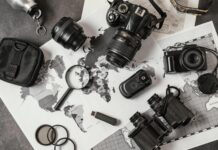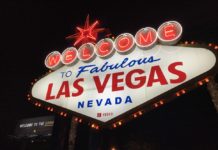Dear reader, I have written a lot of times, that Storytelling is one of the most important factors in Photography. A picture without a story is just a superficial picture. Without a story, the photograph has no depth.
The Power of Storytelling in Photography
Sure, there are pictures that are beautiful to look at. Sunrises above the ocean can be heart-warming and look great at the wall. But do they speak to you? Do they tell a story other than those of beauty?
I mean, sure those are nice images without a doubt, but they all are a kind of blob to me. I couldn’t even distinguish most of them. They don’t stick with me and I wouldn’t be able to remember them or come back, just to find another detail.
Documentary Photography, on the other hand, is way more than what you see in the photograph. The picture is only the catalyst in triggering a chain reaction that lets you create a story in your mind.
These stories are what make them memorable and iconic.
Impactful and emotional stories of people, families, and societies will stay interesting for future generations.
Creating Stories
An average movie has 24 frames per second. With a running time of about 90 minutes, this means that the director 129.600 frames to tell his stories.
129.600 frames to create a story from beginning to end. From introducing the characters to facing a challenging and finally solving the problem.
How long would you need to photograph 129.600 Street Photographs? A month, a year or a decade?
A movie has the luxury of having a lot of room to convey a tragedy or make the audience laugh. Storytelling in photography has only room for one frame.
In a single frame, the photographer has to create the same tension, that Hollywood has 129.600 tries and opportunities. I guess you can realize by now, how difficult storytelling in photography can be.
As a static medium, the photograph is frozen in a moment. You don’t know what happened before or afterward. This leaves room for the viewer to come up with a story himself.
A movie director tells a story in 90 minutes.
The photographer shows one frame and wants to bind the viewer. He doesn’t tell the story. He creates enough room and inspiration for the viewer to be involved himself.
Obviously, there are a lot of differences compared to mediums that have a lot more time to evolve their story.
Storytelling in photography should start with an interesting character or detail that instantly catches the attention of the viewer. Then the focus be should lead to a “twist” that creates tension ending with a grand final.
In reality, a photograph is much more abstract than a simple linear story that is present in an image. A lot of it happens in our minds and the minds of the viewers are different.
Therefore not every viewer sees the same story or any at all. Depending on past experiences, memories, and personality the story varies.
The common saying that a photograph tells more about the photographer than its subjects may be true. Referring to the story that a photograph tells, I would go further and say that the story tells more about the viewer than the photographer.

The Beginning
Where does a story in a picture start?
In movies or books, it is very clear that the story starts from page/minute 1 with the introduction. We get to know the characters and the viewer/reader gets lead through the story.
A photograph doesn’t have such a clear order. All we see is a two-dimensional plane where everything seems equally important and has no clear beginning, nor end.
Photographs that haven’t a clear composition appear to be chaotic and hard to follow.
Although photographs don’t have a timeline, the composition should support a direction that seems reasonable for the viewer.
One common misconception I observe for Street Photographers that recently began to explore this genre is that they try to pack everything into one image. They feel the pressure to include every detail or interesting point into one frame because otherwise, it might be too boring. This leads to images that haven’t a clear handwriting and are just confusing.
Storytelling in Photography should come with a detail that stands out from everything else. Helping the viewer to understand where a potential story could begin.
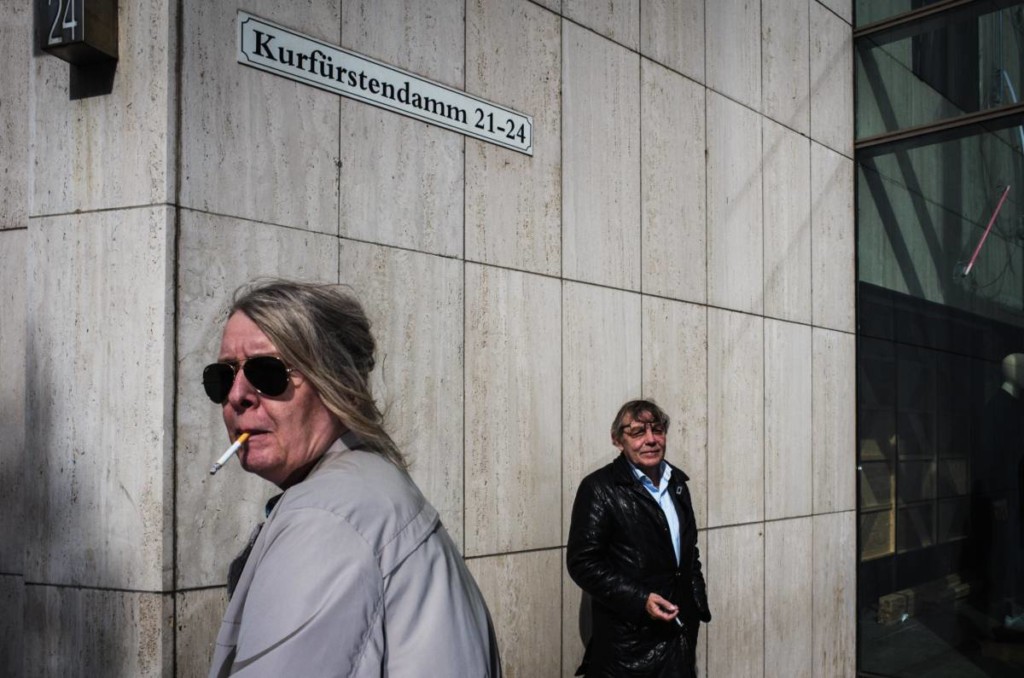
Gestures
There are some details that are often talked about in Street Photography and how we should be on the search for them. The reason why photographs with such details are more interesting is that they more easily tell a story.
They are universally understood and it is easy to come up with an interesting story for the viewer.
Gestures are one of those details that often work well in Street Photography.
As a form of human interaction, they naturally tell a story and often show emotions very directly.

As seen in this picture by Nancy Borrowick from her series “The Family Imprint“, gestures come in more handily when there are people directly interacting.
Showing a portrait of a single person usually doesn’t convey such a strong story. Even when having strong characters in front of the lens, it becomes very hard to display a complete story.
In Street Photography, looking for persons that already communicate and display some sort of action makes it a lot easier to find a story in the image. In other words, the story is already naturally there, as a Photographer you don’t have to do much other than capturing it.
A Single Person
When only featuring a single person, there needs to be some context that helps to form a story.
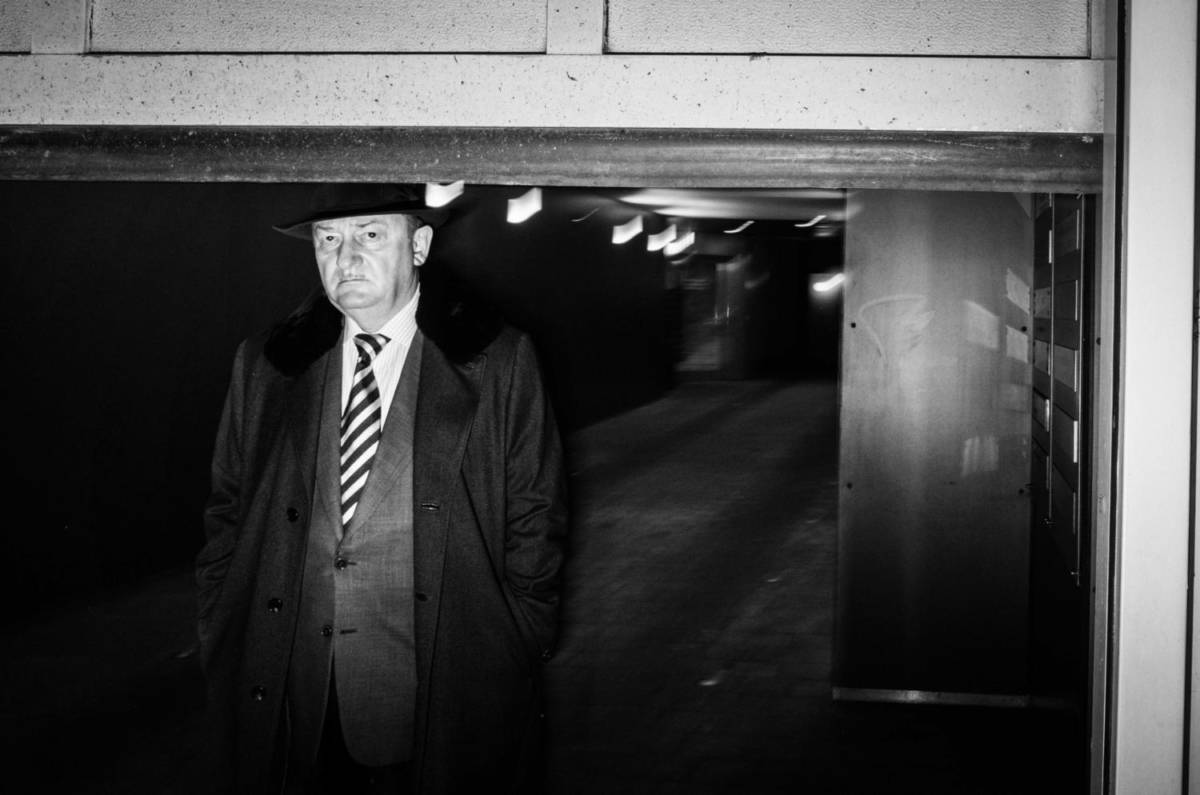
For example in the shot above, the person works pretty well in this night and flash photo. Where did he come from, what is his job? He almost seems like the godfather of the Berlin Ku’Damm and the lights behind him support such a story.
Usually, when I shoot single people it is for the aesthetics or atmosphere, seldom for the story.
Open Stories
Photographs can either display the complete story or leave some hints for the viewer to interpret.
The distinction is in “open” or “closed” stories.
Open stories don’t picture the whole story.
I mentioned before that the composition has a great impact on the story. Triangles are often used to create interesting story arcs. The key in open stories is, that for example only two of the cornerstones of the story is visible while the third is left out.
This leaves room for interpretation for the viewer to tell the story the way he prefers it.
Open stories are more engaging for the viewer as they give them the opportunity to have a more direct influence. In return, they are also more demanding.
In return, they are also more demanding.
Often, when there isn’t the story directly visible, it takes some time for the viewer to come up with an interpretation of the image himself. Depending on the imagination and inspiration, not everyone will have “access” to the image. Some will observe the photo with question marks, while others really get involved and are able to come up with a great interpretation.
Thus, the critique can be very mixed and polarizing. One-half will appreciate your efforts and “understand” your hints and directions in which you are leading, while others might be confused and aren’t able to create a story.
Negative feedback or harsh critique, in this case, shouldn’t make you insecure. If you feel positive towards your own image this should be your main concern.
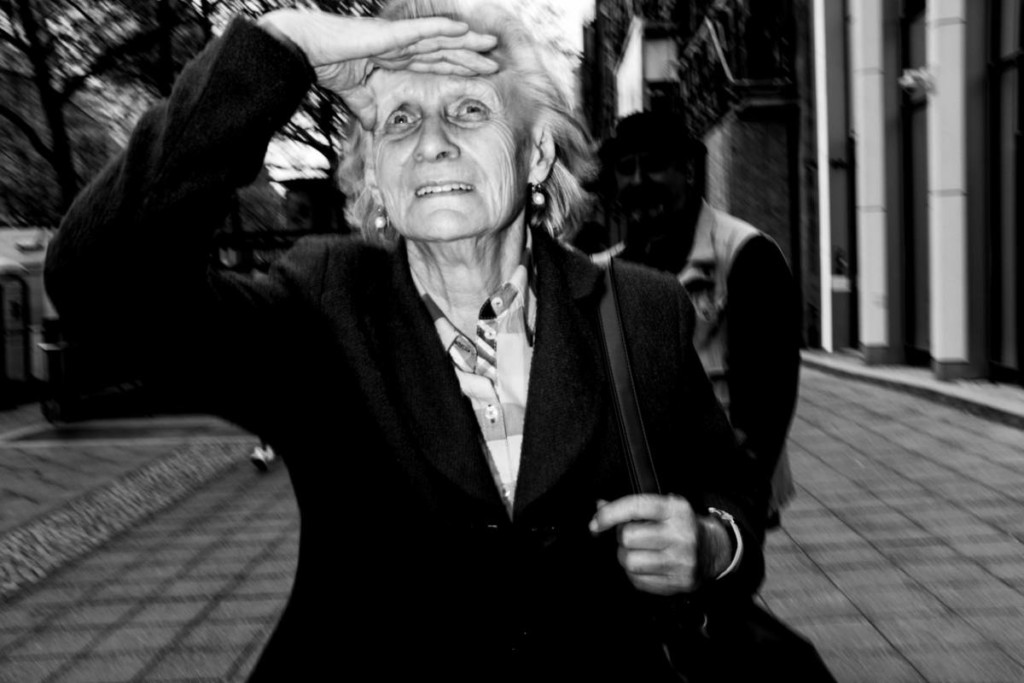 The picture above is a small example of an “open” story. We only see the woman with a very fierce look but have no information what she is witnessing.
The picture above is a small example of an “open” story. We only see the woman with a very fierce look but have no information what she is witnessing.
Closed Stories
On the contrary, there are stories that are very obvious and are mainly told by the photographer, respectively the subjects.
Every relevant detail that is important is visible in the picture which should make it easy for the viewer to follow the storyline.

In this case, the setting is pretty clear. Even without any further background information, it is a very festive situation. With the lights in the back, there are strong hints at New-Years Eve, which is correct in this image.
Although this particular image doesn’t leave much room for interpretation, even closed stories have some variance.
There isn’t one unique truth in photography.
Tears could either be from joy or grieve, a hug at the train station could either be a warm welcome or a sad goodbye.

In Street Photography I feel that it is not our obligation, to tell the truth. We are storytellers that use the street as our stage. What we tell is candid and unposed, but not every time directly what was happening in reality.
There is always some leeway in telling the story and as there is no neutral narrator, closed stories can be interpreted differently as well.
Not Everyone has to understand the Story
Storytelling in Photography is a very complex topic.
People that aren’t interested in photography or don’t have any imagination left, deny that photos can tell a story. They claim, that it is totally made up and the image could show anything and everything without an actual narration.
I understand that not every picture speaks to everyone. The same happens to acclaimed quality work. Not everyone sees the daily stories of Chicago in Vivian Maier’s images.
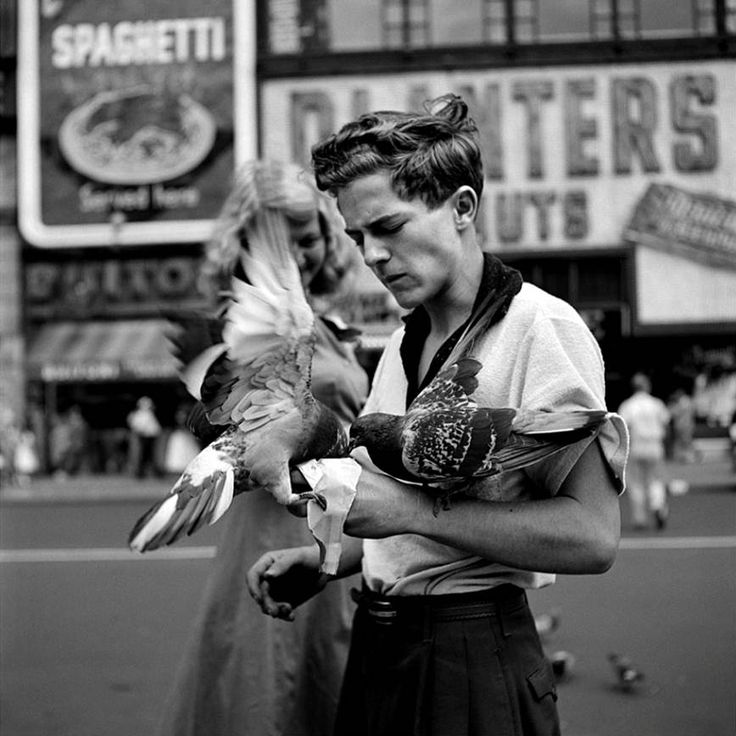
Which is totally fine, different tastes for different people.
In conclusion, this doesn’t mean that a good picture will speak to everyone.
To me, it is more interesting to create controversial pictures that invoke a strong emotion in some, than addressing a broader audience.
Therefore I understand if you find the following interpretation of pictures by Bruce Gilden to be bullshit.
But he is a passionate photographer and it is his side of the story.
Conclusion on Storytelling in Photography
Photography is about stories and emotions.
Storytelling in Photography can be very complex and difficult to achieve. Search for gestures, interactions or in general actions.
Don’t simply photograph people, photograph stories that already happen in front of your camera.
Give the viewer some cornerstones he can work through your image.
Guide him with your composition.
Start the story with the main detail something simple that is the first thing a viewer notices in your image. Employ other details more subtly that can be integrated into the story.
Don’t refrain from creating “weird” stories that only a few people do understand.
Your worst fear might be that no one understands your images.
Your second worst fear should be that everyone does.
Controversial pictures are more interesting and valuable than creating popular boredom to entertain a broader audience.




